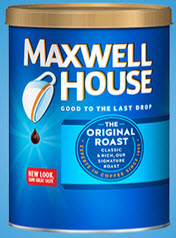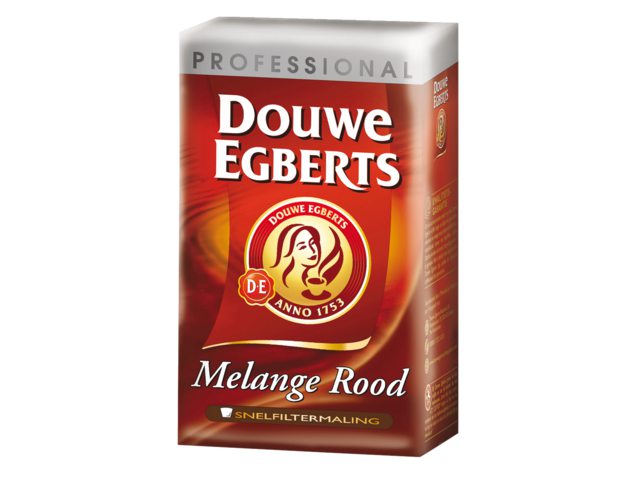What tea professionals need to start the week of May 12, 2014 —
Global consolidation in the coffee and tea segment has led to more than 100 deals valued at $23 billion the past five years. Last week’s proposed combination of Mondelez International’s coffee brands (Maxwell House) with D.E. Master Blenders 1753 BV (Douwe Egberts) will create a $7 billion behemoth that owns dozens of leading brands in the major coffee drinking countries… Oprah surprises Teavana customers in NYC… Kenya intends to increase local tea consumption by building new factories that add value to its largely bulk production of black CTC (cut, tear, curl).
Once investors identify a golden opportunity it soon catches the attention of bigger investors.
 It is a little like the shiny minnow that darts harmlessly in the sea grass near the bottom of the pond. None of the really big fish pay much attention until a curious few one-pounders gather.
It is a little like the shiny minnow that darts harmlessly in the sea grass near the bottom of the pond. None of the really big fish pay much attention until a curious few one-pounders gather.
It is they who get gobbled.
In the past five years 100 deals valued at $23 billion have consolidated coffee and tea globally. Merger and acquisitions with the significant investment that follows, made a big impact on specialty tea brands. Coffee chains and juice ventures have been expanding so successfully they have now caught the attention of global firms.
Teavana’s acquisition of Teaopia followed by Starbucks’ acquisition of Teavana comes quickly to mind but Pickwick tea in Europe, Tea Forte, Talbott Teas (acquired by Jamba Juice) and the Unilever purchase of T2 are other recent examples.
In the $81 billion coffee market and $90 billion market for tea – size matters. Once a business has demonstrated that it is scalable it becomes edible.
The proposed combination of Mondelez International’s coffee brands with those of D.E. Master Blenders 1753 BV follows the acquisition of relatively small fry including Peet’s Coffee & Tea, Caribou Coffee and Tea Forte by Joh. A. Benckiser (JAB Holding Co.)
 JAB paid $10.4 billion for D.E. Master Blenders and now owns Douwe Egberts, Senseo (single-serve coffee machines), Pilao, Merriild, Friele, Harris, Moccona, L’OR and Pickwick Tea. The company sells coffee in 45 countries and has leading positions in Norway, Denmark, Belgium and the Netherlands. The $3.4 billion DMB employs 7,500. It is the world’s No. 3 coffee marketer.
JAB paid $10.4 billion for D.E. Master Blenders and now owns Douwe Egberts, Senseo (single-serve coffee machines), Pilao, Merriild, Friele, Harris, Moccona, L’OR and Pickwick Tea. The company sells coffee in 45 countries and has leading positions in Norway, Denmark, Belgium and the Netherlands. The $3.4 billion DMB employs 7,500. It is the world’s No. 3 coffee marketer.
Mondelez, which owns Maxwell House, Tassimo and Jacobs Coffee, Carte Noire, Grande Mere, Kaffee HAG, Kenco and Gevalia, has the top selling brands in 10 countries including France, Sweden, Poland and Austria. The firm holds a second place in Germany, Greece, China, Ireland, Russia and Denmark. The company split from Kraft in 2012 and maintains its largest holdings in snack foods. It is valued at $64 billion. Mondelez is the world’s No. 2 coffee marketer earning $3.9 billion last year.
Master Blenders offered $5 billion for the Mondelez coffee unit. If approved the new company, to be known as Jacobs Douwe Egberts (JDE), will be the largest pure-play coffee venture in the world. Annual revenues would top $7 billion with a global coffee market share of 16.3%.
That makes JDE a big fish but dwarfed nonetheless by Nestle, the world’s largest coffee supplier. Nestle sells $20 billion a year worth of coffee, about one fifth of its $100 billion annual food and beverage sales.
Nestle accounts for 22.7% of the $81 billion global coffee market, according to Euromonitor International, a market research company headquartered in London.
The company earns 40% of its annual coffee sales from roast and ground, and owns several billion dollar brands. Its Nescafe soluble coffee business is immense. Nespresso remains the top selling single-serve brand and Nestle is building boutiques and marketing its espresso home brewers in Canada and the U.S. Nestle maintains excellent margins and it is broad based – but it is not nimble.
Rapid expansion of the middle class in Brazil, India and China is opening opportunities to sell coffee to millions of new consumers.
Merging the coffee units allows the combined company “significant growth opportunities in a highly attractive market,” said Pierre Laubies, CEO of Master Blenders and prospective head of the new entity which expects to save $1.5 billion annually once the merger concludes early next year.
Jacobs Douwe Egberts will benefit from its focus on coffee in identifying future acquisitions. There are many mid-sized retail and roast coffee ventures thriving in the emerging coffee drinking countries.
In North America DAVIDsTEA in Montreal has demonstrated that it can scale and so has Argo Tea in Chicago. Second Cup in Toronto is another potential target.
Next year when life in the pond begins to settle look for JDE to grab another bite.
Learn more: www.demasterblenders1753.com and www.mondelezinternational.com
Oprah Surprises Teavana Patrons
Oprah Winfrey is having a great time marketing her new Oprah Chai with pal Howard Schultz CEO of Starbucks.
The other day she surprised patrons at the new Teavana store in New York City, chatting and laughing and enjoying her new role as the nation’s spokesperson for tea. And on Sunday she donned the Green Starbucks apron and served customers a Mother’s Day buy one and get one free Teavana Oprah Chai Tea Latte.
The visits were a perfect photo opportunity with staff eager to make her tea strong to order. On her way out the door she handed out gift cards.
Curious about the combined power of television ads, promotions, TV interviews, personal appearances and hundreds of media reports on Oprah Chai I emailed the Teavana publicists at Starbucks a note requesting information on total sales (or charity contribution). I think first week sales will top $500,000.
What’s your best guess?
[polldaddy poll=8039270]Tapping Kenya’s Internal Tea Market
Kenya, which relies on small holders to grow black tea for export, has experienced a difficult period due to declining prices, high production cost, climate change, narrow market outlets and limited diversification and value addition.
This week Kericho county Governor Paul Chepkwony announced his jurisdiction plans to build a new tea factory on its 450-acre Kabianga tea farm for an estimated $3.4 million (Sh300 million).
The county is undertaking feasibility studies to determine whether the processing factory will turn a profit producing higher grade “value-added” teas suitable for export to international markets.
Tea grown in this region is currently processed as CTC (cut, tear, curl) at the nearby Momul Factory owned by the Kenya Tea Development Agency.
The project is worthy of note because value-added processing is the key to generating profits. It is also central to increasing domestic consumption. About 5% of Kenya’s tea is sold in the domestic market earning $250 million, a small number compared to India where almost 90% of the locally grown tea is sold within the country. Chinese companies have created many profitable brands for various segments of the market consuming 82% of China’s 1.85 billion kilo annual production.
Kenya’s Ministry of Agriculture is currently formulating a ‘national tea policy’ to encourage tea drinking. Principal secretary Sicily Kariuki told the Kenya Star on Saturday the policy will seek solutions to sustain production of high quality tea and reduce the cost of production, processing and marketing. The policy will also look into tea trade and value addition.
Kenya earned $1.3 billion from tea exports in 2013.
Learn more: Kenya Star
Tea Biz serves a core audience of beverage professionals in the belief that insightful journalism informs business decision-making. Tea Biz reports what matters along the entire supply chain, emphasizing trustworthy sources and sound market research while discarding fluff and ignoring puffery.
Tea Biz posts are available to use in your company newsletter or website. Purchase reprint and distribution rights for single articles or commission original content. Click here for details.


